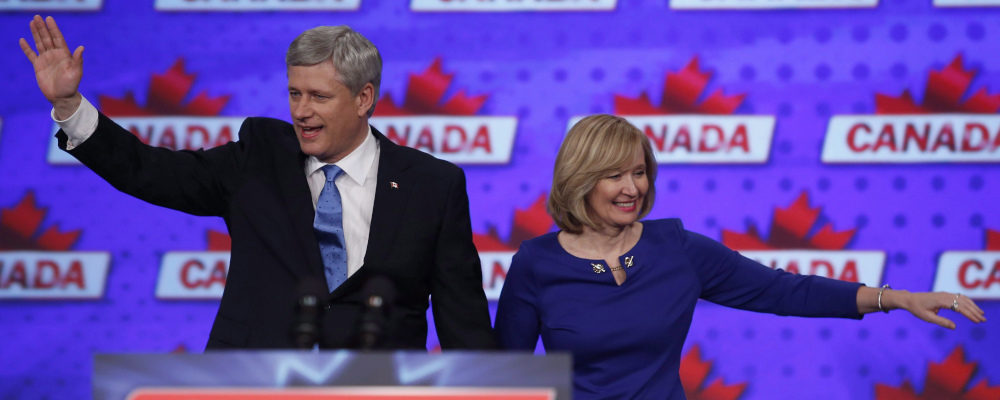As the Conservative Party of Canada licks the wounds of its third consecutive general election defeat, Canadian conservatives can look at the party’s situation in three ways. They can look forward with obdurate optimism; they can look backwards with nostalgia (the conservative mode par excellence); or they can look backward to see where they took a wrong turn and, having found the road not taken, they can follow it forward.
While I incline to nostalgic reaction and would defend it as a rational pose in a period of civilizational decline, the third option makes the most sense for a party intent on eventually winning another election.
Almost a year ago, the Konrad Adenauer Stiftung — the German think tank of the centre-right CDU party, which most Canadians will know as the party of Angela Merkel, Helmut Kohl and, of course, Konrad Adenauer — asked me to contribute to a book on the history of conservative parties and their policies in Canada and Germany. It has now been published as “Parallel Values: Christian Democratic and Conservative Values in Contemporary Western Politics – Perspectives from Canada and Germany.”
My half of the book, which is titled “Unpicking the Skein: Tracing the threads of the CPC’s politics backward and forward from 2020,” includes a potted history of Canada’s conservative parties, focussing on Macdonald, Diefenbaker, Mulroney, Manning, and Harper, followed by reflections on some (mostly) consistent policy themes. While my contribution was written almost a year ago, and well before 2021 election was called, I believe most of it remains relevant to a party looking to find its way back — and forward — to power.
What follows is an excerpt of the introductory sections.
The full book is available in electronic form here:
___________________________
The poet Earle Birney famously said of Canada that “It’s only by our lack of ghosts we’re haunted,” and while that is not actually true of the country — there are plenty of ghosts, from Generals Wolfe and Brock to Thomas D’Arcy McGee and Pierre Laporte, whose untimely deaths haunt our history — it is true of Canadian conservatism. That is not to say we have not had great leaders and even a few notable theorists, but Canadian conservatism has been renewed and reinvented so many times that a Conservative leader today has to squint to discern a coherent tradition among so many disparate and contradictory historical figures and is, thus, mostly free to chart his own course free of spectral haunting.
The task I have been set is to tease out of this diverse party history those principles that have endured over time and apply them to the current political landscape. Some of these principles have been present from the beginning; others entered Canadian conservative thought more recently, but have since become inextricable from the party’s conception of itself.
The first challenge that any Canadian conservative party must confront is that Canada is not a conservative country. This means that a majority of Canadians will not endorse the policies approved at a party convention. That is why principles are so important. When party policies are tailored for public approval, or adapted to meet unexpected circumstances, it is the underlying principles that must guide the policymakers.
As Paul Wells wrote back in 2007, “Governments improvise more than they can ever plan, and it is natural for conservatives to prefer that a Conservative get to do the improvising.” That is especially true now as we face the greatest period of economic, social, and spiritual destabilization in Canada’s history — but only if the Conservative doing the improvising understands and respects the party’s historic principles.
Principles are also important because without them a party — and the country it leads — can offer only banausic slogans and an ad hoc policy agenda. Even if such a party wins election, through democratic fatigue with the incumbent or favourable vote splits, it can do no good, and likely much harm. A government can’t expect to win the allegiance of its own citizens, which is necessary to inspire solidarity and industry, let alone the respect of by its peers, which is necessary for trade, diplomacy, and war- and peace-making, if it doesn’t offer a vivid account of what it stands for.
With that in mind, the principles that I have teased out of the history of the Conservative Party of Canada for discussion are:
• Free trade and principled foreign policy
• Immigration and multiculturalism
• Federalism
• Economic choice and security
• Nation-building
This list is selective. It omits many areas of public policy — including criminal justice, Indigenous affairs, the environment, ethics and accountability, and national defence — not because they are not important, but because their distinct roots in Conservative party history are harder to untangle. Nor are the chosen principles discrete; each extends beyond the space allotted to it and, in most cases, encroaches upon others. The reason I have chosen them, however, is that they are areas that highlight clear philosophical differences between Canadian Liberals and Conservatives. They are areas where Conservatives can claim to be more than reluctant, foot-dragging Liberals.
The full essay continues here.




